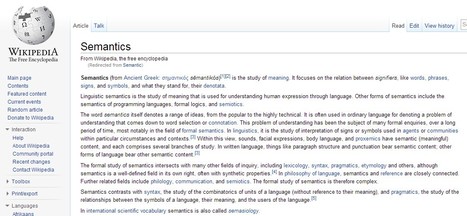السّلام عليكم ورحمة الله وبركةه SEMANTICS Lecture : Dian, S.Pd., M.Pd.
- 2. SYAIMA FAUZIYAH ANWARI Definition of SEMANTICS and The Study Word Meanings
- 3. Definition of SEMANTICS What is semantics?
- 4. What is Semantics? • The study of meaning of words, phrases, and sentences. – Lexical semantics (words and meaning relationship among words) – Phrasal/ sentential semantics (syntactic units larger than a word) • What a speaker conventionally means (objective or general meaning)- not what he is trying to say (subjective or local meaning)
- 5. Semantics is a sub discipline of linguistics which focuses on the study of meaning. Semantics tries to understand what meaning is as an element of language and how it is constructed by language as well as interpreted, obscured and negotiated by speakers and listeners of language.
- 6. How can we describe the meaning of different words? • Three types of semantic analysis: –Words as ‘containers’ Semantic features – ‘roles’ they fulfill Semantic roles – ‘relationship’ with other words lexical relation
- 7. Semantic features • Syntactically correct sentences but semantically odd. – The hamburger ate the man. – My cat studies linguistics. – The table listens to the radio • This relates to the conceptual components of the words ‘hamburger, cat & table’ not human.
- 8. Semantic Features • Semantic properties: The components of meaning of a word. • Meaning as collection of properties/features typically with two possible values (+ / -) • Example of componential analysis: baby is [+ young], [+ human], [+animate]
- and so on...
Learn more / En savoir plus / Mehr erfahren:
https://www.scoop.it/t/21st-century-learning-and-teaching/?&tag=Semantic-Web



 Your new post is loading...
Your new post is loading...











Learn more / En savoir plus / Mehr erfahren:
https://www.scoop.it/t/21st-century-learning-and-teaching/?&tag=Semantic-Web